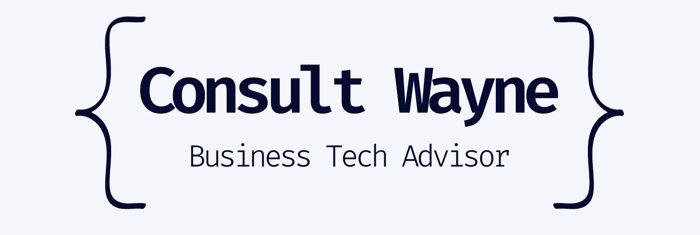FAQ on MCP Server Security for Agentic AI Interoperability
Agentic AI introduces new infrastructure like the Model Context Protocol (MCP) server, which enables AI agents to access and act on data. This “command center” boosts automation but also expands the attack surface. Our FAQ dives into key security risks, real-world threats, and best practices. Essential reading for CISOs, architects, and security leaders navigating AI. Stay informed, secure, and ready for the future of intelligent autonomy.
5/8/20243 min read


1. What is an MCP (Model Context Protocol) server and why is it important for agentic AI?
An MCP server acts as a central, lightweight program that exposes various data sources (like documents, databases, and tools) to AI agents through a structured protocol. It serves as a "universal translator" or a "USB-C port for AI," enabling different AI models to interact with diverse data systems and perform actions by using defined "primitives" such as "Tools," "Resources," and "Prompts." This interoperability is crucial for building sophisticated "agentic workflows" where AI agents can autonomously access information, utilize tools, and make decisions, ultimately enhancing automation and innovation.
2. What are the primary security risks associated with deploying MCP servers in agentic AI ecosystems?
MCP servers, by their nature as gatekeepers to valuable data and tools, inherit traditional server vulnerabilities such as unauthorized access, data breaches, Denial-of-Service (DoS) attacks, and malware infections. However, the integration with AI introduces unique risks, including data poisoning, model inversion/stealing, adversarial examples that can trick AI agents, and backdoors that could lead to malicious behavior. Furthermore, the interconnectedness facilitated by MCP means a security breach in one server can potentially cascade across the entire network of interacting agents and data sources.
3. How can compromised AI agents themselves pose a security threat to MCP servers?
MCP servers mediate the interaction between AI agents and data sources, meaning a compromised agent, or even a cleverly manipulated request from a legitimate agent, can be used to exploit the server. For instance, an agent tricked with adversarial input might inadvertently divulge sensitive information stored on the MCP server or trigger unauthorized actions. The autonomous nature of agents, combined with the broad access potentially granted through MCP, creates a significant attack surface that could lead to system infiltration, privilege escalation, and data exfiltration.
4. What lessons can be learned from past security incidents involving similar control plane technologies, and how do they apply to MCP servers?
Incidents involving cloud control planes (like dashboards and APIs managing cloud resources) and other management infrastructure (such as the TeamCity, SolarWinds, and Okta breaches, and the NASA JPL hack) highlight the high-value nature of such systems for attackers due to their broad access and control capabilities. MCP servers, acting as a control plane for AI agent interactions, share this critical characteristic. These past incidents underscore the importance of treating MCP servers as high-value assets and applying stringent security measures to the entire software supply chain supporting them, similar to how critical cloud infrastructure is protected.
5. What are some essential best practices for securing MCP servers and the agentic AI workflows they support?
Key security best practices include implementing robust access control with Role-Based Access Control (RBAC) and the principle of least privilege, enforcing Multi-Factor Authentication (MFA) for all administrative access (and ideally for agent authentication), encrypting data at rest and in transit, continuous monitoring and detailed logging of server activity, regular security audits and vulnerability assessments, timely patching of all software components, network segmentation to isolate the MCP server, having a comprehensive incident response plan, and rigorous input validation and output sanitization to prevent adversarial attacks and data leakage.
6. How can the communication between AI agents and MCP servers be secured effectively?
Securing agent-server interactions requires a multi-layered approach. This includes strong authentication mechanisms for agents (like API keys, OAuth, or User ID Tokens), strict input and output sanitization to prevent malicious code or data injection, end-to-end encryption using TLS/SSL, rate limiting to mitigate abuse, and continuous monitoring for anomalous agent behavior. Maintaining detailed audit trails of all interactions is also crucial for tracking and investigating potential security incidents. Implementing mutual authentication, where both the agent and the MCP server verify each other's identity, adds an extra layer of trust.
7. What compliance and regulatory considerations should be taken into account when deploying MCP servers and agentic AI systems?
Deploying MCP servers and agentic AI often involves handling data subject to various regulations like GDPR, CCPA, HIPAA, and PCI DSS. The upcoming EU AI Act will further emphasize risk management for AI systems. Adhering to frameworks like the NIST AI Risk Management Framework and ISO/IEC 42001 is increasingly important. Compliance goes beyond simply ticking boxes; it requires establishing strong data governance, implementing appropriate security controls, ensuring transparency in AI operations, and maintaining clear lines of accountability. Failure to comply can result in significant financial penalties and reputational damage.
8. What are the foundational security principles of authentication and authorization, and how should they be applied to MCP servers and interacting agents?
Authentication (verifying the identity of a user or agent) and authorization (determining what a verified entity is allowed to do) are fundamental to MCP server security. Strong authentication for MCP servers requires moving beyond passwords to MFA for human administrators and utilizing secure tokens (like API tokens, OAuth, or User ID Tokens) for AI agents. Authorization should strictly adhere to the principle of least privilege, implemented through RBAC with fine-grained permissions down to specific API endpoints or data fields. It's crucial that authorization decisions are based on the requester's identity, not solely on the output of an AI model, to prevent confused deputy problems. Continuous authentication, where agents periodically re-verify their credentials, can further enhance security.
